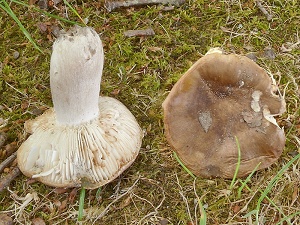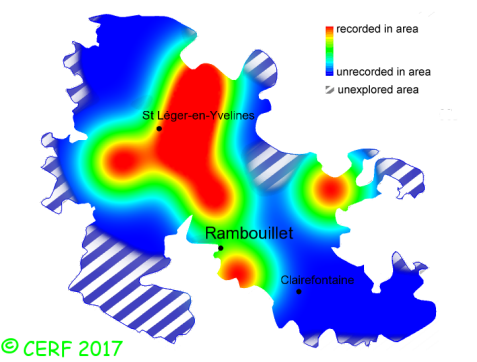| Russula sororia Fr. |
|
|
|
|
|
|
The cap is brownish grey to sepia-brown or tawny-brown; its margin is strongly striate. The cap surface is smooth, viscid in wet weather. The stem is whitish, without ring. The flesh is unchanging; its taste is oily or of spice; the odour is like fresh camembert cheese, or cooked artichoke or rancid; its texture is grainy (breaking like a chalk stick). The gills are greyish-white, free, distant . The spore print is pale cream. This species is mycorrhizal. It grows on the ground, in broad-leaved and coniferous woods, on a rather sandy soil, with oak. The fruiting period takes place from July to November.
Chemical tests : flesh becoming salmon pink when in contact with iron sulphate; faint purple reaction of cap cystidia to sulpho-vanillin; stem becoming pale pink with formalin. Distinctive features : Grey-brown cap, darker in the centre, viscid when damp and with a grooved margin; white gills, with a tinge of grey, and an odour of cheese (camembert); oily then acrid taste Russula sororia is quite rare and localised in the forest of Rambouillet, and is infrequent, more generally speaking . | ||
|
page updated on 14/01/18

